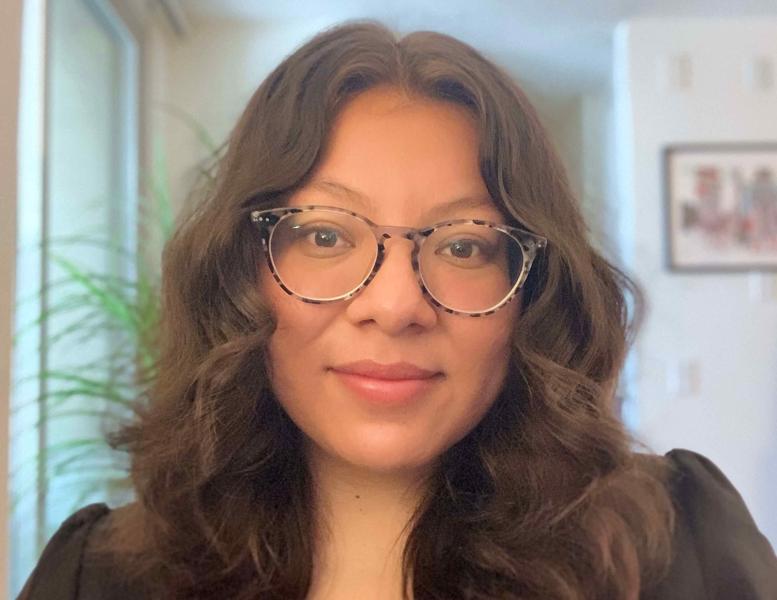Broadening the Reach of Mental Health Care
Feature Story
By Sara Frueh
Last update September 9, 2021

Ford Fellow Yesenia Aguilar Silvan studies how to connect young people with the help they need
About one in every six children between the ages of 6 and 17 in the U.S. has depression, anxiety, or another treatable mental health disorder, an analysis of data from the 2016 National Survey of Children’s Health concluded.
But many children and teens don’t get the treatment they need. About half of the young people who have been diagnosed and told that they would benefit from mental health services never get in the door for a first session, explains Yesenia Aguilar Silvan, a first-year doctoral student in clinical psychology at the University of California, Los Angeles.
Aguilar Silvan, a recipient of a pre-doctoral Ford Fellowship, hopes to change that. Through her research, she’s trying to understand the initial barriers that keep young people from getting help and what can be done to overcome them.
“I became really interested in the idea of initial engagement — the first point of contact that kids have with mental health services,” says Aguilar Silvan. “How do we make sure we’re increasing that first engagement and first point of contact among all youth?”
Connecting young people with care
Aguilar Silvan studies implementation science, which aims to move evidence-based treatments into practice so that they actually help people — an outcome that’s not a given.
“At UCLA we have top-notch effectiveness researchers looking at how helpful cognitive-behavioral therapy (CBT) is, for example, but if you go out into a community, those services are not typically being delivered, and that’s a problem in our field,” says Aguilar Silvan.
Even when effective mental health services are available in a community, she says, a number of barriers can keep young people from connecting with those services: financial hurdles and lack of insurance, language barriers, stigma, and lack of knowledge about how to get started with treatment.
As a first step toward understanding how to overcome those early-stage obstacles, Aguilar Silvan is researching what young people know about mental health services, how they’re learning about mental health, and how they’re currently finding care.
Many young people are getting mental health information from social media sources like Tik Tok — an avenue that has pros and cons, Aguilar Silvan notes. On the positive side, these platforms raise awareness and get people talking about mental health, she says. The downsides are that the information often hasn’t been fact-checked and that the sheer amount of information is overwhelming.
“There’s too much information in a way that is not helpful to everybody anymore,” says Aguilar Silvan, who sees the need for easy-to-use information to help people navigate the decision points involved in seeking care — how to understand when symptoms warrant care, understanding what evidence-based treatments exist, finding a therapist, weighing whether medication might help, and so on. “How do we help synthesize that information in very clear steps?”
After gaining a better understanding of barriers to care for young people in general, Aguilar Silvan plans to look at the particular hurdles faced by young people from marginalized populations and how to address these roadblocks. “We know that youth of color don’t get services at higher rates, even though trauma rates are higher in those populations,” she says.
Finding tangible solutions
Aguilar Silvan decided to pursue ways to broaden the reach of mental health services after noticing an unmet need in the community where she grew up. “I was born in Mexico and then I moved to the U.S., and in the community where I was from, I saw a lot of this coming up,” she said. “It’s a low-income neighborhood, and the majority of the people living there are first-generation immigrants.”
When talking with the people around her, Aguilar Silvan recalls, they might say that they were sad or had an “ataque de nervios,” a form of anxiety.
“I noticed that there was a lot of conversations about these symptoms, but not really being able to label them, and not knowing that you could go to talk to someone about them,” says Aguilar Silvan. She wondered how someone like her father would find mental health services if he needed them, for example, or a child who had just immigrated to the United States.
“I think that a lot of my personal experiences are driving these interests in really trying to find tangible solutions for people that they can use on a day-to-day basis,” says Aguilar Silvan.
Her future research and work could take a range of forms, she says. “I think there’s a lot of potential with this research topic.” One avenue would be to collaborate with tech companies to help them make informed decisions about content and ensure that people aren’t being overloaded with information. Another path might be working with nonprofit organizations to use research and science to bring mental health services into community settings through new avenues, such as churches and community centers, in order to destigmatize seeking mental health care. Higher education holds appeal for Aguilar Silvan, too. “I love working with and mentoring students, so I can see myself following an academic career as well.”
Whatever path or paths she follows, Aguilar Silvan wants her work to have practical benefits for people. “I think that research is super important — we need to champion science — but I want research that is actionable.”
Read more about the Ford Fellowship Program, administered by the National Academies.



